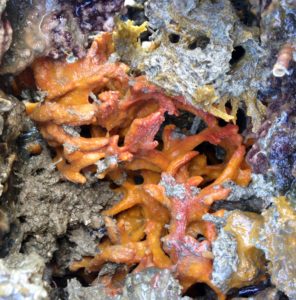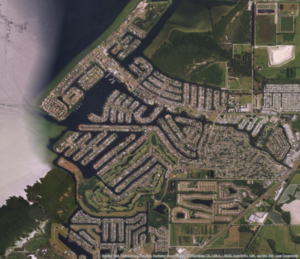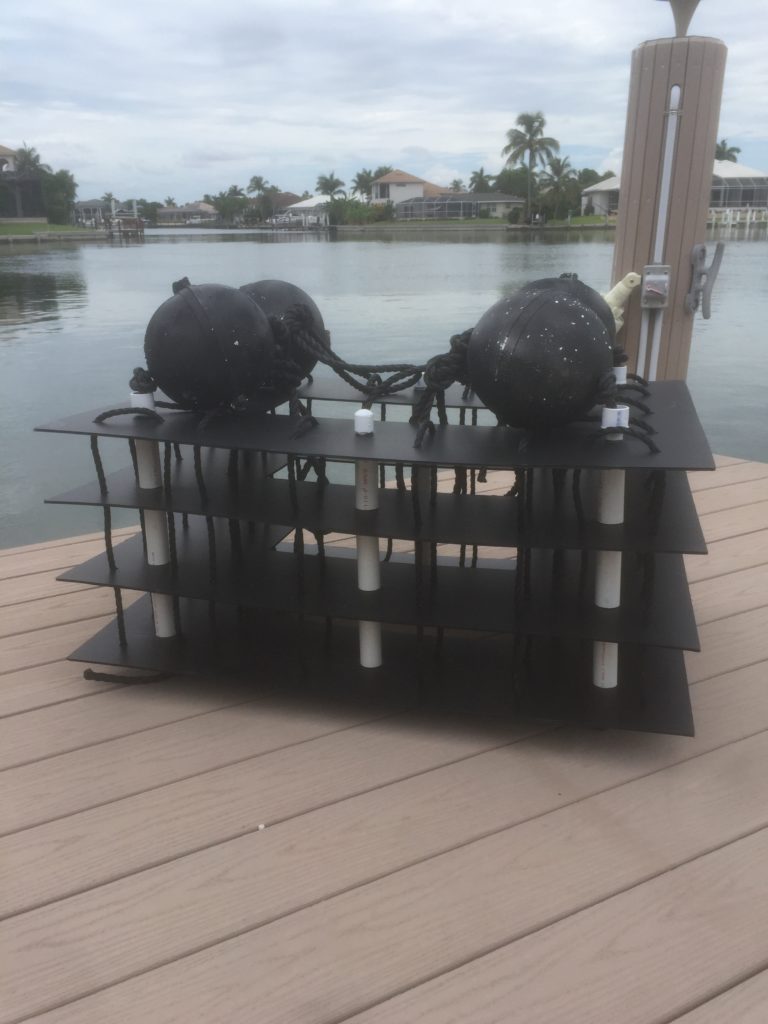If you build it, they will come.
Beginning decades ago, thousands of acres in Florida were transformed with dredge-and-fill operations that created canals to maximize waterfront development. These canals provide homeowners with easy water access to our diverse waterways, but the
docks, bulkheads and seawalls don’t provide the same habitat values
and water quality benefits as our salt marshes and mangroves.

Typically canals have poor water quality because of the surrounding land uses and a lack of tidal flushing, so they’re devoid of the wildlife expected to thrive in marshes and mangroves. But because the canals are lined with expensive waterfront homes, restoring natural habitats would be nearly impossible.
Such was the challenge facing David Wolff, who had worked on an artificial reef as a USF marine biology undergrad in the 1990s. At the time, the focus was cleaning water for the aquaculture industry, but when he retired after a successful career in real estate, Wolff revived the technology to re-create habitats in the “biological deserts” of canals found along Florida’s coast.

“We were working on creating the perfect habitat for aquaculture because the biomass filters an enormous amount of water,” he said. “We set a 100,000-foot containment boom around the habitats and the water was clear in 24 hours – we had to pump dirty canal water back into the system to keep the creatures alive.” (Of course, most Florida canals flush with tides and are loaded with nutrients from adjacent landscapes so starving marine creatures isn’t likely.)
Today, his not-for-profit Ocean Habitats, Inc. has installed hundreds of habitats under docks and in canals in Marco Island, Naples, Fort Myers and Stuart, and is now looking at expanding into the Tampa Bay region. These new habitat features are constructed of fiberglass, PVC pipe, polypropylene rope and crab-trap floats. For most customers, however, cleaner water is just a side benefit to the number and diversity of fish attracted to once-barren habitats that hosted mainly catfish with an occasional sheepshead prior to the habitat installation.

Photo courtesy Ocean Habitats LLC
As chairman of the Marco Island Waterways Advisory Committee, Jim Timmerman has long been an advocate of the habitats. “I’m very much a performance-driven individual and I wanted to see how these work so I had one installed behind my house in June 2015,” he said. “That was right before we went to Maine to visit my wife’s family for a month. When we got back, my son had already seen juvenile mangrove snapper and snook under the dock where there had been nothing but catfish before.”
Since then, the Timmermans have seen mature snapper and snook, as well as barracuda and dolphin. “We’ve been here for 30 years and we used to see a lot of fish, but that was the first ’cuda we’d seen in 20 years. The dolphin have figured out that if they slap the bottom of the habitat with their tails, fish come swarming out so they’re following the food and hanging out in the canals too.”
One of the most critical elements of the habitat for Timmerman is that they not interfere with boats, so they’re located under existing docks rather than creating obstacles, he adds.
The city of Marco Island agreed to fund 25 of Wolff’s Ocean Habitats but other residents have joined the effort and now a total of 280 habitats line the canals of Marco Island. “Everybody can see the difference, so they’ve all jumped in,” Timmerman said. “We have another 100 on order, just waiting for everyone to clean up after Hurricane Irma.”
In fact, the habitats have proven so popular that some people install plexiglass sections and lights under their docks specifically to watch the wildlife that the habitats have attracted, Wolff said.
The mini-reefs function much like the mangrove systems that originally lined Florida’s coast, providing places for filter-feeders to attach and small fish to hide. The small fish, in turn, attract larger fish. Filter-feeders like sea squirts move in shortly after the systems are installed; in three years the habitats reach peak efficiency with oysters and other filter feeders.
Based on his work at USF, Wolff says that a fully developed habitat can clean an average of 30,000 gallons of seawater per day. A water quality project has been created to document that impact in local canals, with volunteers collecting water and tests being performed by Ocean Habitats staff and student interns from local schools and universities.
“The goal now is to show how much difference these habitats make in water quality,” he adds. “People can already see what a difference they make in wildlife.”
This is just one example of work being done in Florida, to see more options for restoring ecological functions in canals from Florida and beyond, please scroll through our Pinterest Board which includes examples being explored to improve the ecological conditions of these man-made canals, including artificial mangrove root seawall modules, and Reef Balls (which has worked with both Tampa Bay Watch and Florida Audubon in Tampa Bay) and efforts to use residential docks to grow young shellfish. Permits may be required.
It is important for us at Bay Soundings to bring you information you may find interesting or useful. Reference in this article to any specific commercial product or organization name is for informational purposes and does not constitute endorsement, recommendation, or favoring by Bay Soundings.
Article published October 2017.
